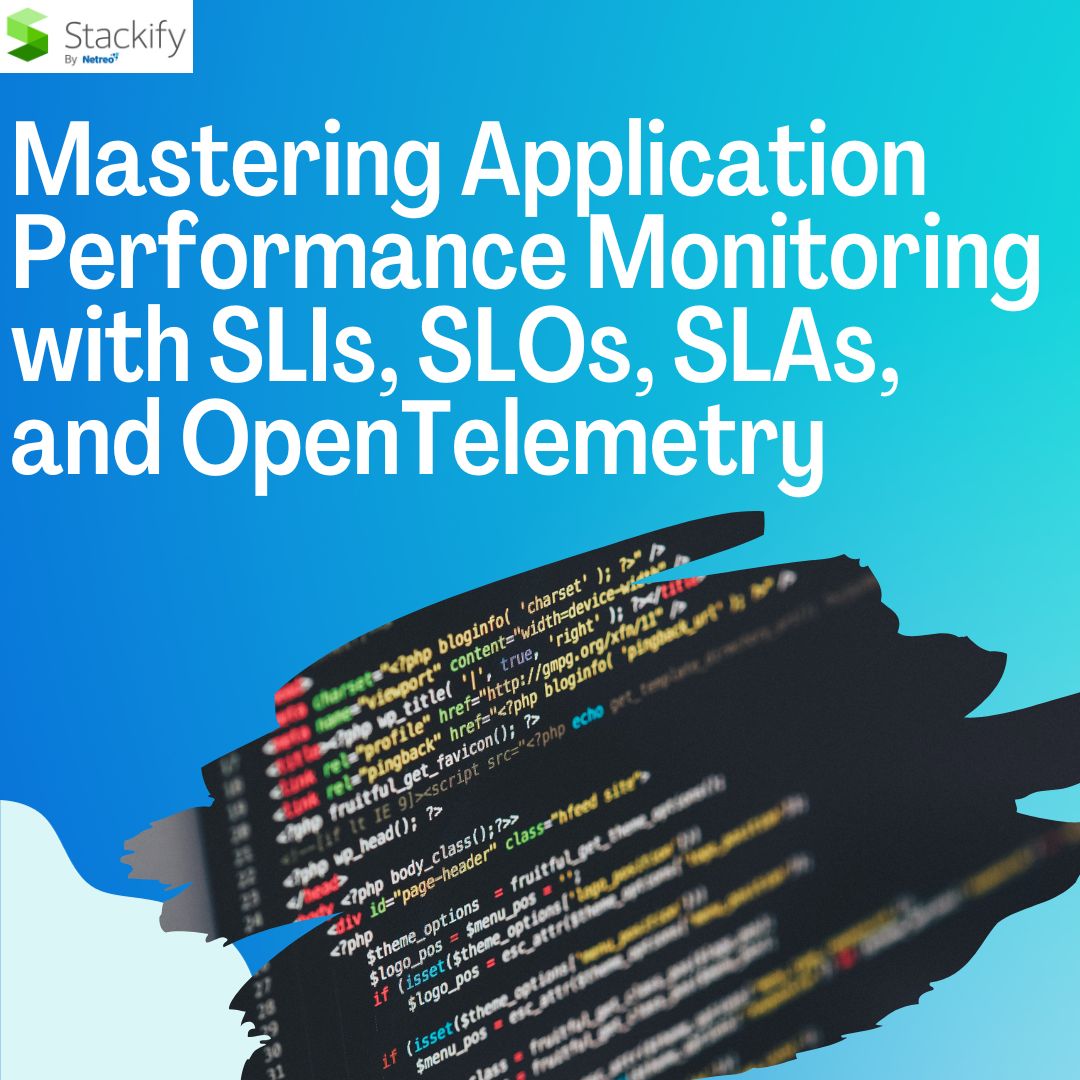In today’s fast-paced digital landscape, ensuring the optimal performance of your applications is paramount. As applications become more complex and distributed, monitoring their performance has become a challenging task. To address this, a combination of advanced tools, Service Level Objectives (SLOs), Service Level Indicators (SLIs), and Service Level Agreements (SLAs) is employed. OpenTelemetry, in particular, plays a significant role in helping organizations achieve a deeper understanding of application performance. In this article, we will explore the world of application performance monitoring tools, SLOs, SLIs, SLAs, and how OpenTelemetry can enhance performance monitoring.
The Need for Application Performance Monitoring Tools
In the age of digital transformation, applications are the lifeblood of businesses. Any disruption in the performance can lead to customer frustration and revenue loss. Therefore, the need for robust Application Performance Monitoring (APM) tools has never been greater. APM tools offer insights into the health and performance of applications, helping organizations proactively identify and rectify issues.
Understanding SLOs, SLIs, and SLAs
Service Level Objectives (SLOs)
Service Level Objectives (SLOs) are essential for defining the desired level of service reliability. They establish a clear and measurable goal that outlines the acceptable performance of an application. For example, an SLO for a website might be defined as “99.9% of requests should be served without errors.” SLOs are the foundation for assessing an application’s reliability.
Service Level Indicators (SLIs)
Service Level Indicators (SLIs) are the metrics or measurements used to gauge the performance of an application. SLIs are directly related to the user experience and are used to determine whether the application is meeting its SLOs. Common SLIs include latency, error rates, and throughput. Monitoring and collecting these metrics is crucial for evaluating the application’s performance accurately.
Service Level Agreements (SLAs)
Service Level Agreements (SLAs) are formal commitments made to customers or stakeholders regarding the expected performance of an application. These agreements are typically based on SLOs and ensure that the application meets specific standards. If the application fails to meet the agreed-upon SLAs, penalties or compensations may be applied.
Leveraging OpenTelemetry for Enhanced Performance Monitoring
OpenTelemetry is an open-source project that empowers organizations to gain deeper insights into the performance of their applications through the collection of telemetry data. It is designed to be vendor-neutral and works seamlessly across various programming languages. By implementing OpenTelemetry, organizations can enhance their performance monitoring in the following ways:
End-to-End Tracing
OpenTelemetry provides end-to-end distributed tracing, enabling organizations to trace the journey of requests across multiple services. This feature allows for a comprehensive view of request paths, making it easier to identify bottlenecks and performance issues.
Contextual Information
OpenTelemetry metrics allows for the inclusion of contextual information within traces. This means that you can attach metadata and tags to traces, making it easier to understand the context in which a particular event occurred. This contextual information is invaluable when troubleshooting and optimizing application performance.
Standardization
OpenTelemetry follows industry standards and specifications, making it easier to integrate with various APM tools and observability platforms. This standardization ensures that organizations can use the APM tools of their choice while benefiting from OpenTelemetry’s enhanced data collection capabilities.
Multi-Language Support
One of the strengths of OpenTelemetry is its support for multiple programming languages, including Java, Python, Go, and more. This flexibility allows organizations to implement OpenTelemetry in their tech stack, regardless of the programming languages they use.
Vendor-Neutral
OpenTelemetry is vendor-neutral, which means that it doesn’t tie you to a specific APM vendor. This openness provides organizations with the freedom to choose the APM tools and observability platforms that best meet their needs, ensuring flexibility and adaptability as technology evolves.
Best Practices for Implementing OpenTelemetry
While OpenTelemetry offers numerous benefits for application performance monitoring, its effectiveness largely depends on how it is implemented. Here are some best practices for successfully incorporating OpenTelemetry into your monitoring strategy:
Define Clear Objectives
Before implementing OpenTelemetry, define clear objectives and identify the specific metrics and telemetry data you need to collect. This will help you align your performance monitoring with your SLOs and SLIs.
Start Small and Scale
Begin with a small-scale implementation of OpenTelemetry and gradually expand its use as your team becomes more familiar with the technology. This phased approach will help ensure a smooth transition.
Train Your Team
Providing adequate training to your team is essential. OpenTelemetry may require a learning curve, and your team should be well-equipped to maximize its potential.
Consistent Instrumentation
Maintain consistency in the way you instrument your code with OpenTelemetry. Consistent instrumentation will ensure that you collect relevant and standardized telemetry data.
Monitor and Optimize
Regularly monitor the performance of your application with OpenTelemetry and use the insights gained to make optimizations. Continuously fine-tuning your application will help you meet your SLOs and provide an exceptional user experience.
Case Studies – OpenTelemetry in Action
To understand the real-world impact of OpenTelemetry, let’s take a look at a few case studies:
E-Commerce Giant
An e-commerce giant implemented OpenTelemetry to trace user interactions across its platform. This allowed them to identify performance bottlenecks, reduce latency, and significantly enhance the user experience. As a result, they saw a 20% increase in conversion rates.
SaaS Startup
A SaaS startup integrated OpenTelemetry into their microservices architecture. By collecting comprehensive telemetry data, they were able to proactively address performance issues, reducing downtime by 30% and improving customer satisfaction.
Conclusion
Application Performance Monitoring is vital for ensuring the reliability and user satisfaction of your applications. Service Level Objectives (SLOs), Service Level Indicators (SLIs), and Service Level Agreements (SLAs) provide a structured framework for setting and achieving performance goals. OpenTelemetry, with its end-to-end tracing, contextual information, and vendor-neutral approach, enhances your ability to monitor application performance effectively.
By incorporating OpenTelemetry into your application performance monitoring strategy and following best practices, you can gain deeper insights into your application’s behavior, optimize performance, and ultimately meet your SLOs. The case studies mentioned demonstrate the real-world impact of OpenTelemetry in improving user experience and achieving business goals.
In a digital world where performance can make or break a business, mastering the art of application performance monitoring, SLOs, SLIs, SLAs, and leveraging OpenTelemetry can give you the edge in delivering exceptional experiences to your users and customers.



